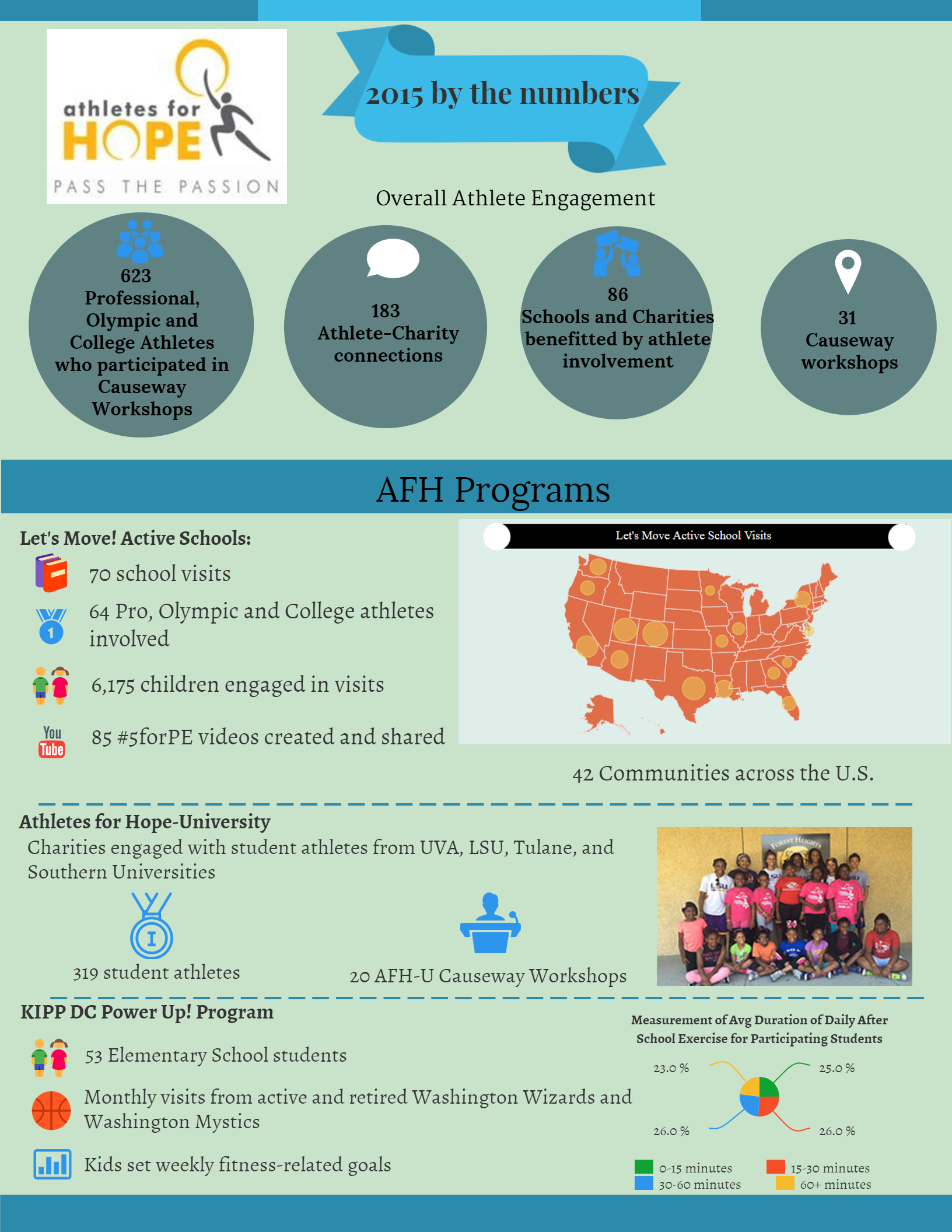Athletes for Hope’s first annual golf tournament is an afternoon to celebrate, recognize and appreciate the power of the athletic spirit in making the world a better place through community service and advocacy.
We invite you to join us in person to support our organization’s efforts to educate, inspire and connect athletes to underserved communities throughout the U.S. and beyond.
Tag: athletes for hope
Athletes & Sports Philanthropy 101
The Map That Helps Athletes Give Back
By Chris Wyttenbach, AFH Chief Program Officer
Often, athletes want to make a positive difference in the world, but they don’t always know how to begin or how to turn their charitable passions into action. That is where the Causeway comes in.
The Causeway can seem like a complicated topic, especially for athletes who are new in their sports philanthropy journey. However, you will come to find out that it isn’t a race to the finish line, but rather a lifelong road map that leads to education, discovery, connection, and partnership.
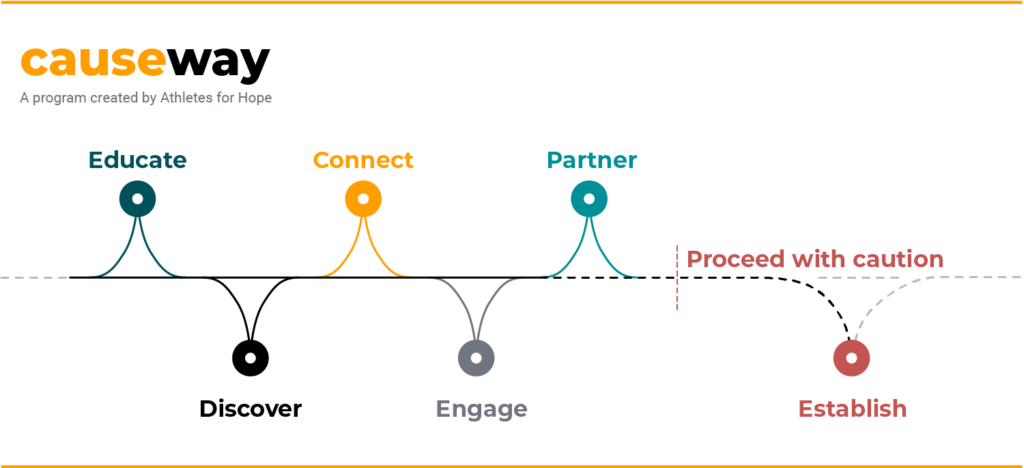
Getting Into The Roadmap
What is the Causeway?
Athletes should approach charitable involvement in the same way that they approach their sports, and that’s what the Causeway does. It’s a series of steps that focus on education, reflection, improvement, and, ultimately, impact. It provides a structure that prevents athletes from getting ahead of themselves and gives them the opportunity to truly understand their platforms as agents of change for the causes that they care about.
The Causeway is a road map specifically designed to help athletes map out their charitable involvement.
When was the Causeway created?
The Causeway came together a few years after the creation of Athletes for Hope. Taking from the leadership of our Founding Athletes and the feedback from all of our AFH Athletes, we recognized that there was an opportunity to formalize the charitable journey for athletes. So, working with one of our pro bono partners, we took a deep dive into the many elements that are within sports philanthropy. The end product was the Causeway, which is now at the root of all that we do. We didn’t just stop with the creation of the Causeway concept, though. We went on to incorporate the important takeaways from the Causeway into a series of workshops that make it easier for athletes to understand and apply to their own charitable involvement.
Why is the Causeway Important?
The Causeway is full of important tips that athletes can easily incorporate into their charitable involvement. All of these tips equal an approach that leads to smart philanthropy for athletes. For example, as with anything, skipping key steps in a process can set you back. This doesn’t happen all the time, but it happens more than you would think regarding athlete charitable involvement. The Causeway’s structure prevents you from moving too fast. As we say to our athletes, it’s not a race. More broadly speaking, the Causeway leads to a greater level of efficiency, which is so important when it comes to social impact.
The Causeway leverages the good work that non-profits are already doing and allows athletes to easily combine efforts, learn about the issue, and make an impact.
What are the different destinations in the Causeway?
The Causeway has six steps, or destinations, starting with “Educate.” Education is at the beginning of every charitable athlete’s philanthropic journey. Our workshop series helps athletes start thinking about the concept of giving back from an athlete’s perspective and helps them map out their course.
The next step is “Discovery.” Here the athlete takes a moment of self-reflection to identify their passions and motivations. The athlete is now ready for “Connection.” At the Connection step, athletes begin to get into the community and determine what organizations align with their interests and availabilities. Assuming the athlete finds the right organization, they can move on to the next step which is “Engage” where the athlete starts to dedicate more time and resources to this one organization.
Then, if the athlete and organization are ready, the athlete moves to “Partner.” Athletes at this step are leaders in the space and publicly stand with the cause in the public eye. The athlete is a part of the team for their partner non-profit and consistently leverages their platform on behalf of their partner. The last step on the Causeway isn’t for everyone. “Establish” is if an athlete is ready to create a foundation, donor-advised fund, etc. An athlete should go through a series of exercises to determine if this is the right course of action.
It’s important to remember that charitable involvement is not a race and an athlete can stop at any point along the way.
The Causeway works well and its structure recognizes that each athlete’s philanthropic journey is as different as the athlete themselves.
What are some misconceptions surrounding sports philanthropy?
The Causeway addresses some of the major misconceptions around sports philanthropy. For example, you don’t need to be a superstar to make a difference in your community. There are thousands of examples of AFH Athletes making an impact with their causes in their local communities and nationally.
The athlete platform is not something that only household-name athletes have, rather it’s something that all athletes have.
That’s the power of sports. And, put simply, athlete foundations aren’t necessarily the gold standard for athlete social impact. For some athletes, foundations make sense. But, there are many other ways to make an impact. The Causeway helps find the right path for you.
If you are an athlete looking to begin your journey into sports philanthropy, contact us here.
AFH Global
Building Life Skills Through Sports
On Wednesday, October 18, 2022, a team of nine (9) American athletes and staff from Athletes for Hope (AFH) and World Learning traveled to Arusha, Tanzania as part of a seven (7) day project, “Building Life Skills in Youth Through Sports: Program for Tanzania” geared to empower girls and young women through basketball and sport.
Each activity on their daily schedule focused on increasing leadership skills, encouraging positive mental health, confidence, inclusion, cross-cultural understanding, female empowerment, and youth development at the Orkeeswa School, in Monduli, Tanzania.
While they were there, they kept a blog of their daily activity, what impacted them the most, and some of the lessons they took with them from the people of Tanzania. This is their story.
Day One
Written by: Suzanne Potts and Megan Oyster Montefusco
Incredible first day with all of the sights and sounds of Arusha, a bustling little city with honking horns, motorbikes, colorfully dressed women carrying bags on their heads, goats, and speeding trucks on the left side of the road. It became quieter after the one-hour drive to Monduli in the country with rolling hills, lots of agave/cactus, cows, goats, and people walking on the road. The first sight of Orkeeswa school (primary and secondary campuses) was amazing! Tiny buildings, dirt, and concrete floors with a large concrete basketball court and viewing steps. Kids in bright red sweaters and navy skirts for girls and navy pants for boys greeted us and so many stopped and stared. We broke off into small tour groups with students as leaders, then came together for staff and team introductions, a video (Coach Happy link here), and Q&A with Happy. SO INCREDIBLE and it wasn’t even lunch yet.
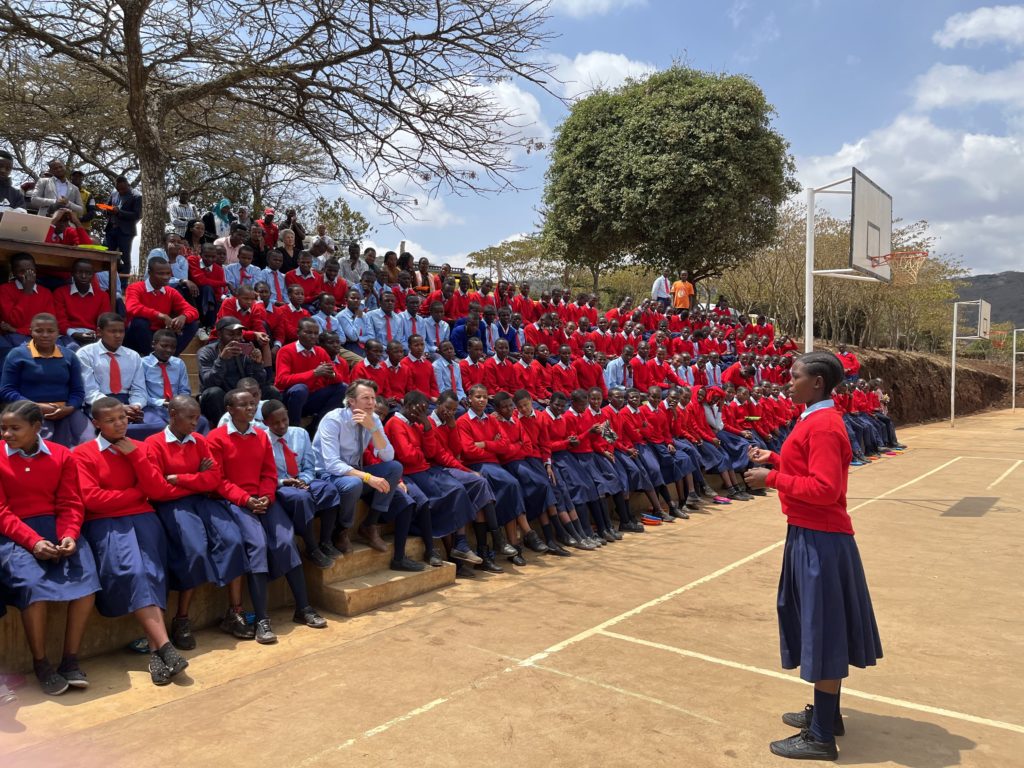
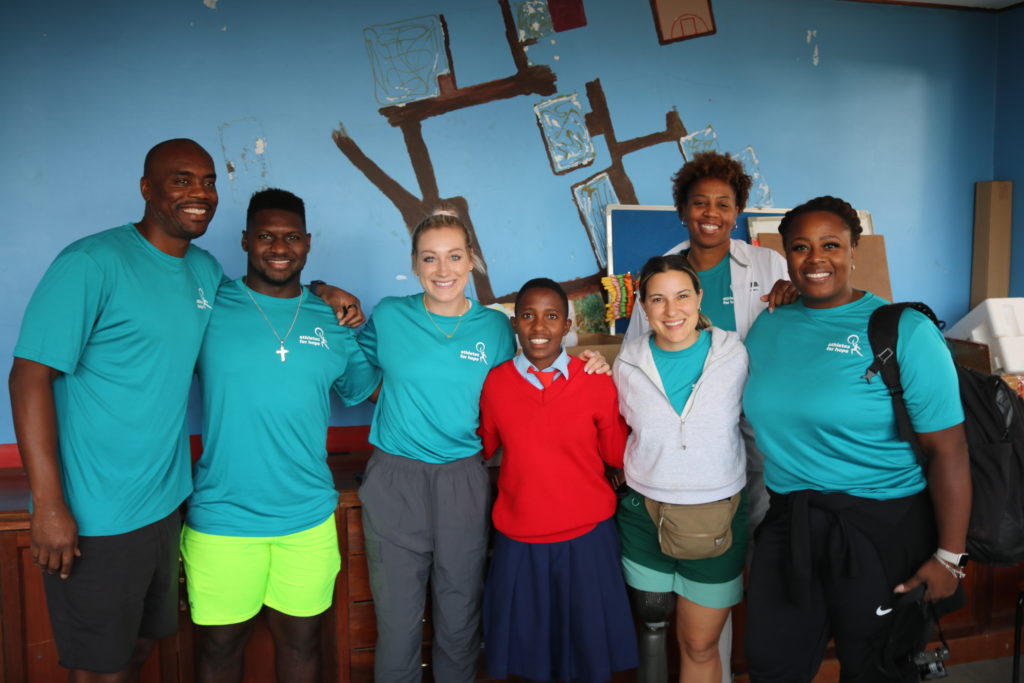
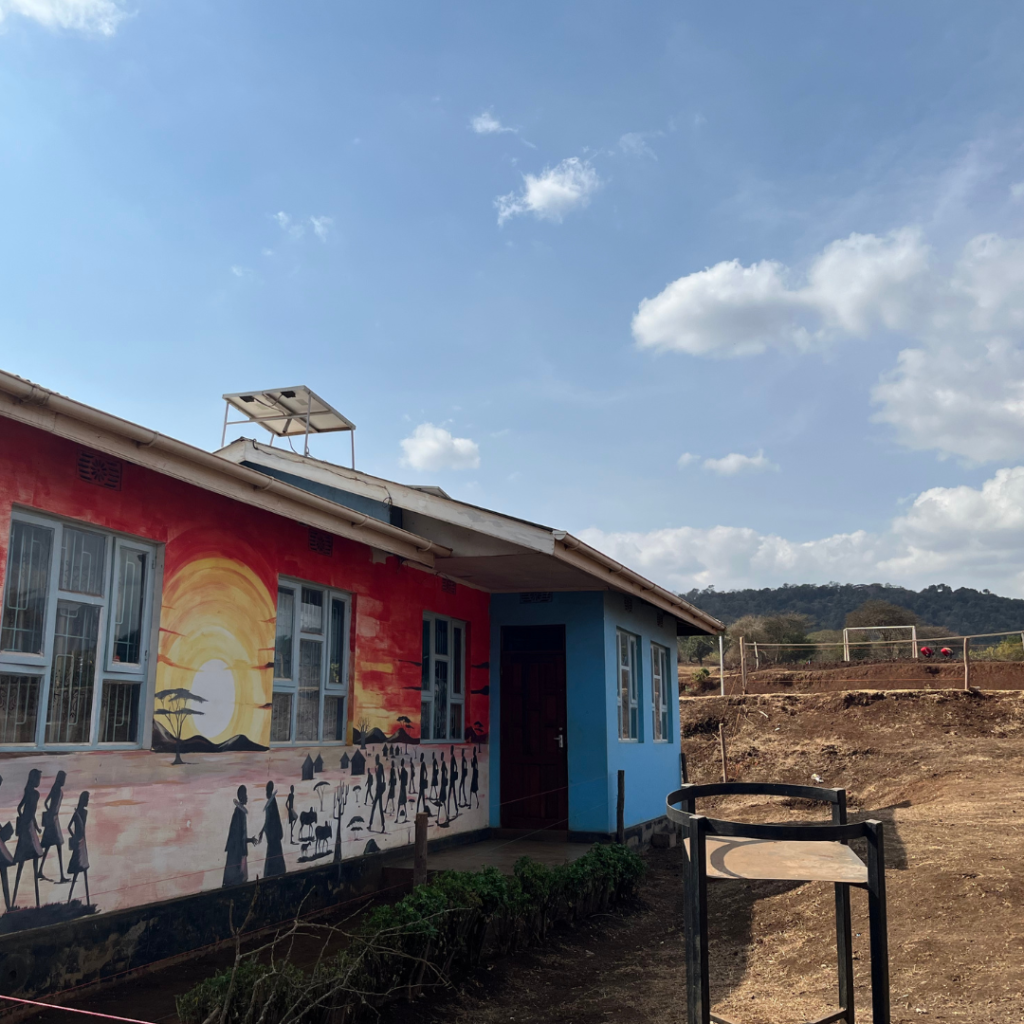
On to our first AFH Fit session with small groups of 15-20 students and two facilitators doing a “Courage” session which proved to be a challenge with many younger kids speaking Swahili and a bit on the quiet side but once they started talking, they really got into it! Many brain breaks and little games and then we all came together for afternoon sports sessions. Basketball, Soccer, Rugby, Volleyball, and a bunch of local villagers were there to watch. Many openly stared at Lacey and her prosthetic leg and she confidently and politely answered questions, and showed them her range of motion and how her leg worked. By the end of the day, we had found many new friends and can’t wait to go back tomorrow.
I jumped into a soccer session and quickly became head coach! It was really fun to lead some drills and watch kids learn in the same way I do. They didn’t need words to understand how to do it, they learned through example and got the little nuances that I was demonstrating super quick. I knew they got it when they gave me a thumbs up followed by a big smile.
Megan Oyster Montefusco, Orlando Pride
Day Two
Written by: Chris Wyttenbach & Megan Oyster Montefusco
It was a full day two for the AFH Group. The group started off with an excursion into the Lendikinya community to learn more about Women’s Agri-Enviro Vision (WAEV), a non-profit organization that empowers women from the Maasai communities through economic opportunities, community health initiatives, and environmental conversation. The Executive Director of the organization, Saing’orie Sangau, introduced the group to some of the participants in the program and explained how his group makes a positive impact in the community. A current student at the Orkeeswa school, Veronica, made an everlasting impression on Megan.
Veronica is a current student and an aspiring intern for Saing’orie Sangau. Veronica walked from her boma to drive with us in our jeep to the bomas so we sat together for all of the rides between bomas. She told me she was interested in agriculture because she saw her mom’s extreme hard work in their own farm pay off ever since she was little. She was so excited for the future of this program and plans to implement what she has learned from her mom and her long list of new ideas into the WAEV program in the future.
Megan Oyster Montefusco, Orlando Pride
To get to this remote area of Arusha, the AFH Group had to leave behind the comforts of the mini-bus and traverse the rocky terrain in 4-wheel drive jeeps. Our first stop was a small boma (house) where we visited a woman who had just started her tree planting. Our second stop was in Lendikinya village to see the boma of one of the initial women who planted trees and now has a full garden of bananas, avocado, mango, and other shade trees, plus a water tank. Her initial success at growing trees led her to get more trees and gardening items, which continues to grow and expand her value in the community.
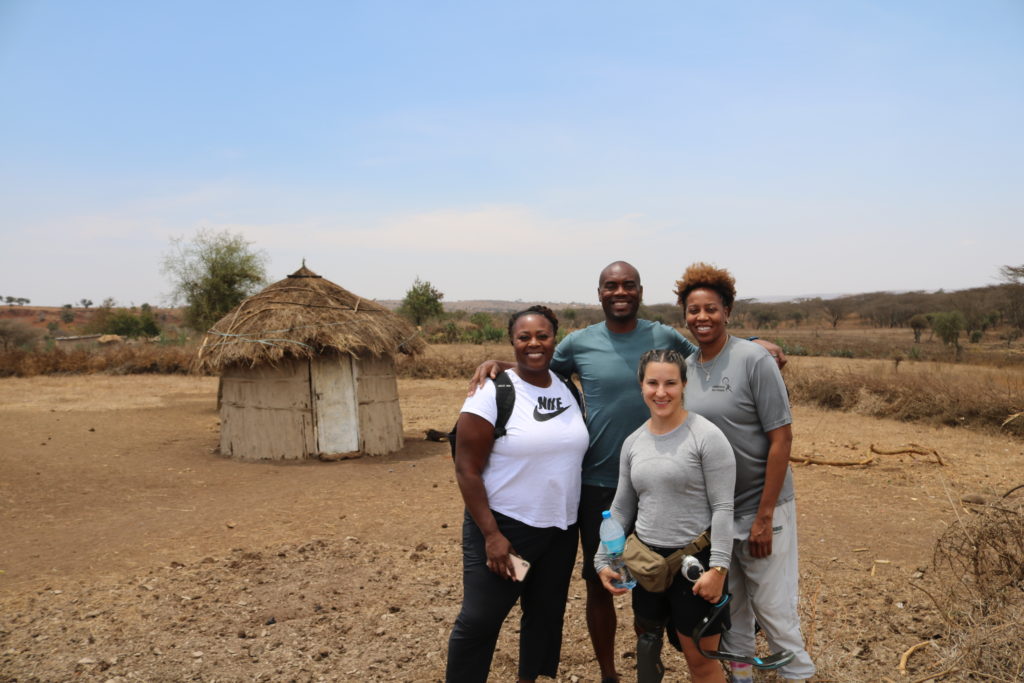
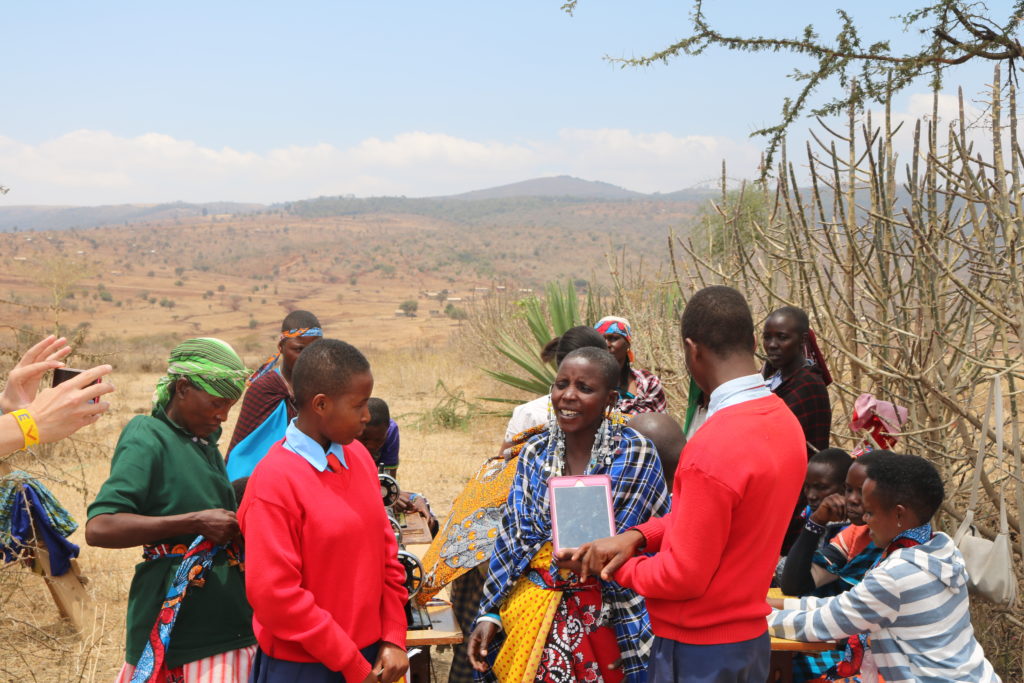
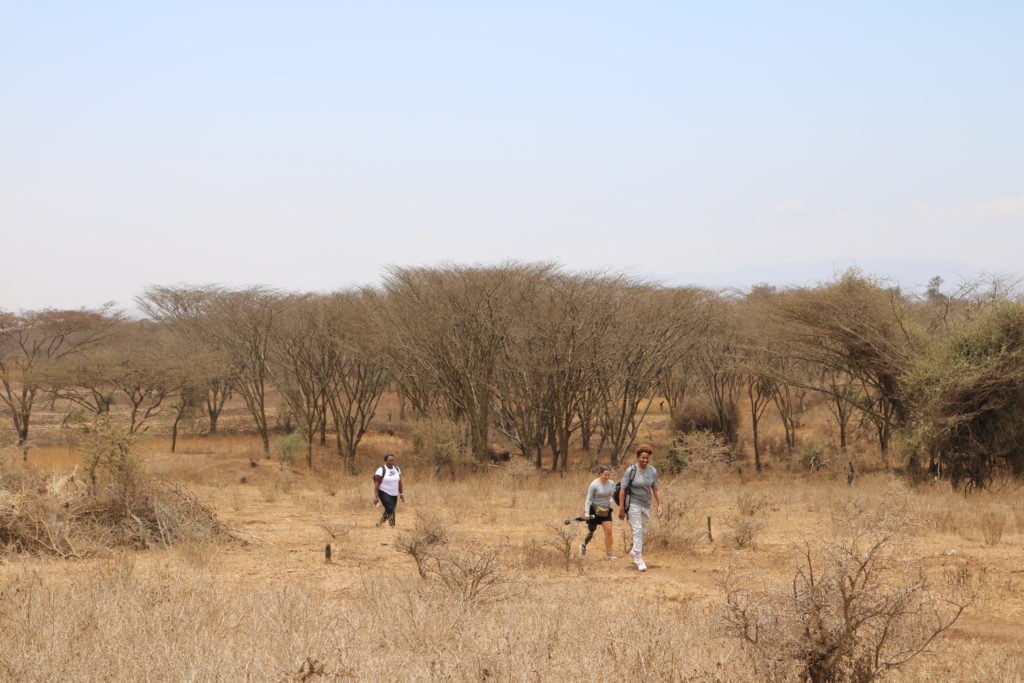
After visiting WAEV, we headed back to Owkeeswa for a lunch. Following lunch, we conducted a Life Skills session for the students that focus on AFH Fit – Honesty. The four groups of 20 students conversed with their AFH facilitators and participated in brain breaks and fun games. In the late afternoon, the AFH members conducted sports sessions. Awvee and Chasity led basketball clinics, Lacey led a long jump clinic, Michelle led a shot put clinic, and Zavier and Megan led soccer clinics. It was a long day, but fun was had by all.
Day Three
Written by: Chris Wyttenbach, Megan Oyster Montefusco & Zaviar Moore
We arrived at the school today at noon and had lunch with the kids. Immediately after lunch, we started our life skills sessions with the students and the staff. The AFH members focused on the AFH FIT curriculum-specifically mindfulness. Awvee led a yoga session for the female basketball players and Suzanne and I conducted a variation of the empowerment workshop for a group of community outreach coordinators.
The workshop for the community outreach coordinators went extremely well. We introduced some of the core 1.0 topics but also dedicated some time to hear their thoughts on sports philanthropy in Tanzania. The group of 8 coordinators did an amazing job with the 1.0 exercises. Perhaps the most unique response during the session focused on the discussion of hope. Raymond, the coach of the U-19 and U-17 Women’s National Team said that basketball gives him hope. In the hundreds of workshops that we’ve conducted, Suzanne and I agreed that we’d never heard this response before. There were several other impressive responses from the group that showed a strong understanding of the 1.0 workshop. And, at the end of the workshop, we asked the group to help us create some 1.0 takeaways specifically for Tanzania.
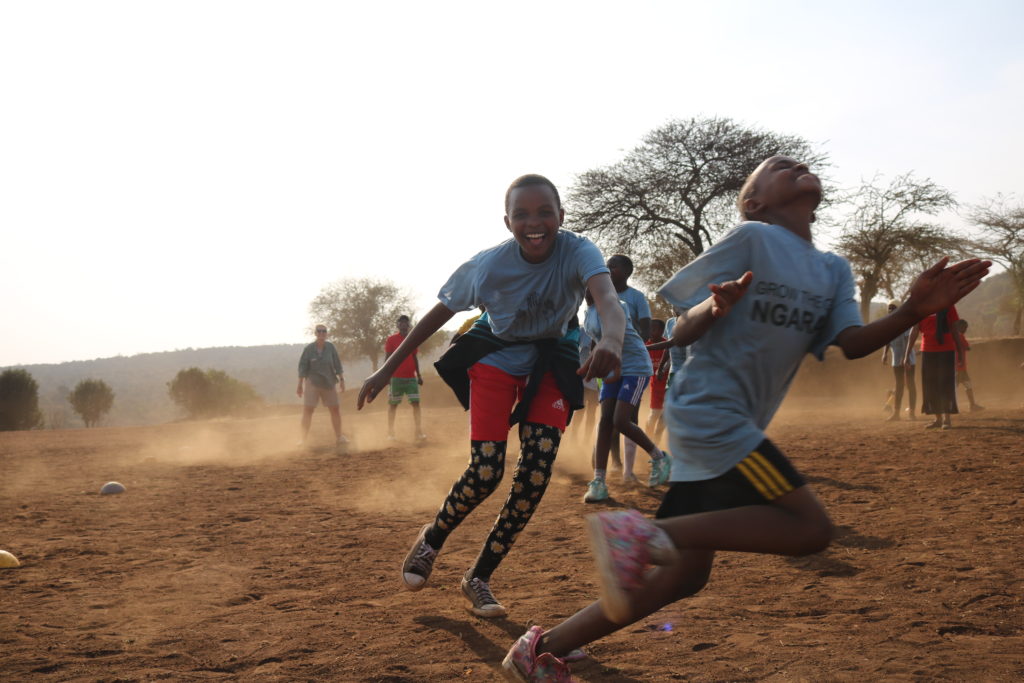
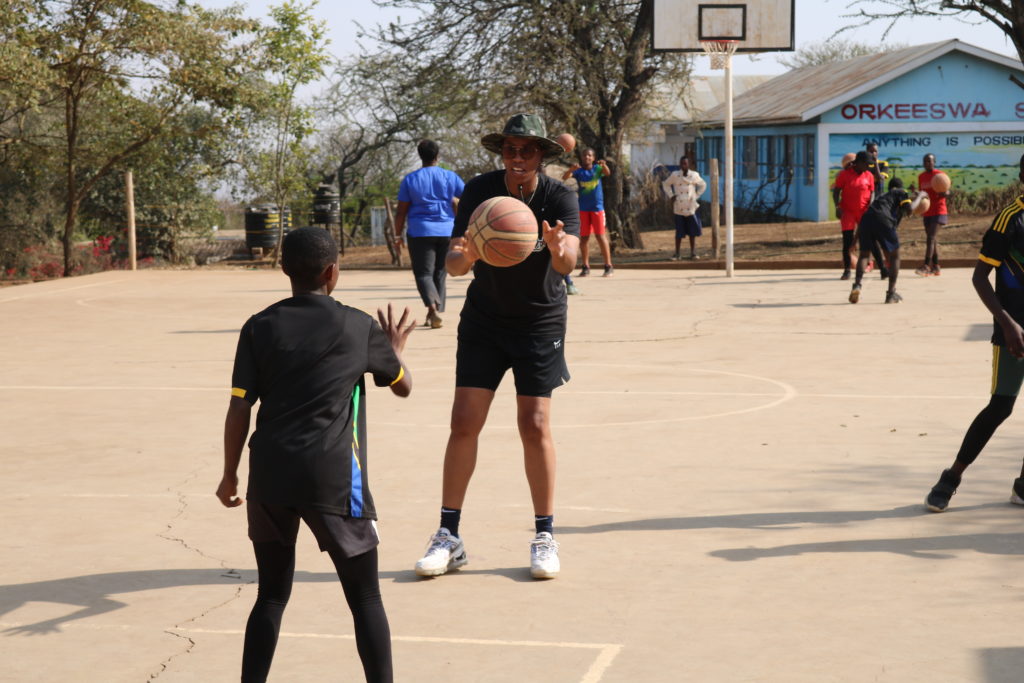
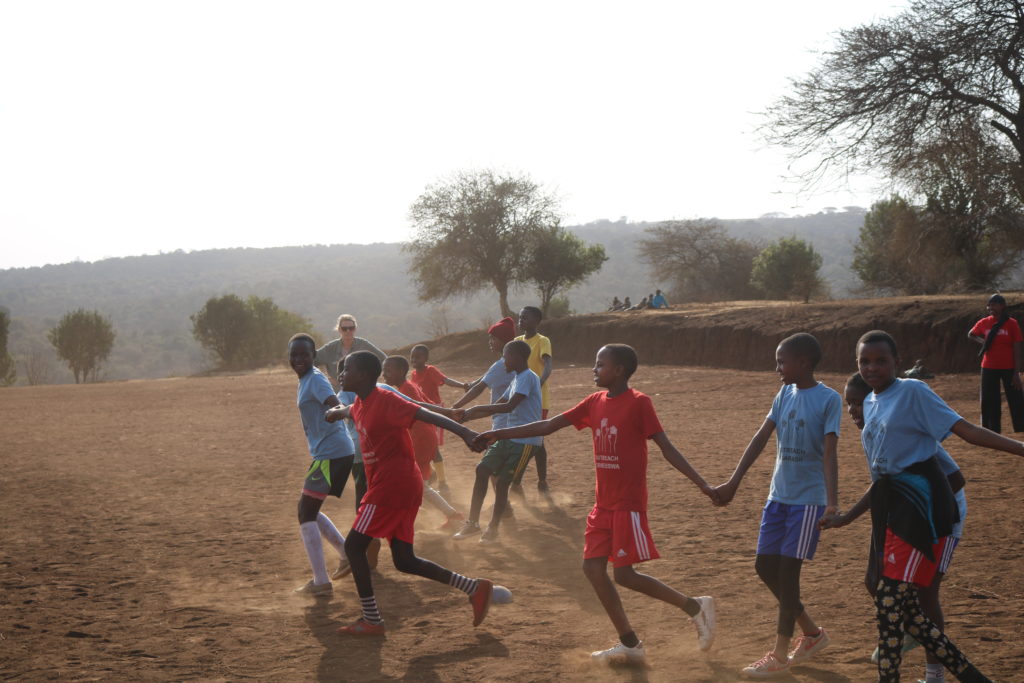
A highlight of this day was working with Zaviar with a group of girls for the life skills classroom session. We played a few games that were a lot of fun but we ended the session by playing Simon Says. We made it a competition by placing a book between two girls. I shouted out head, shoulders, knees, and toes in a variety of orders, and when I yelled “book” the first person to pick up the book in the middle was the winner! I changed some words around to make them extra mindful. For example, frog=book, book=head. They had to listen really carefully and not get caught up in winning, which was tough for the girls but I was proud of that because they wanted to win so badly and grabbed the book uncontrollably! I can relate!
On the way home we saw the most beautiful and genuine moment between a soldier and a little child. The soldier handed the kid a dollar bill and he took off with the BIGGEST smile on his face. Running so fast that he almost couldn’t even keep up with himself. That moment will be forever cemented in my heart.
Zaviar Moore, Southern University Baseball
Day Four
Written by: Megan Oyster Montefusco & Zaviar Moore
A group of us went to Shanga which is a beautiful place that employs people of Arusha with disabilities. It was incredible. There were different rooms with all different types of things being made. From sewing to jewelry making to glass blowing, Shanga had it all and more. Needless to say, I loved meeting every single artist at Shanga and bought all that I could take home with me. Beaded bracelets, glass elephant ornaments, glass bowls, etc., etc., etc.
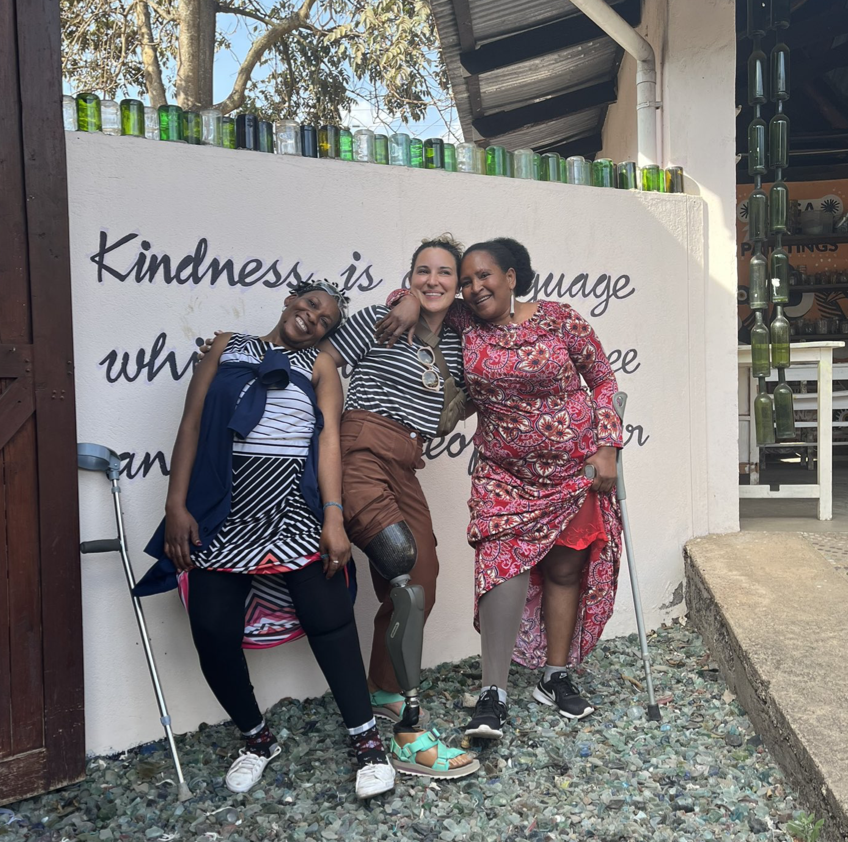
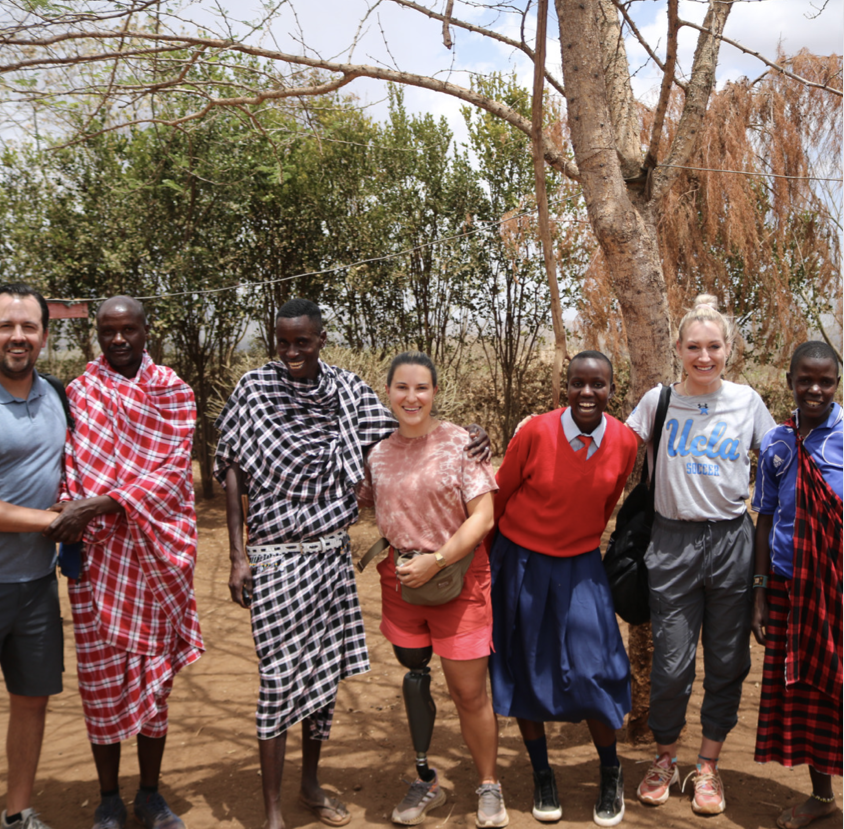
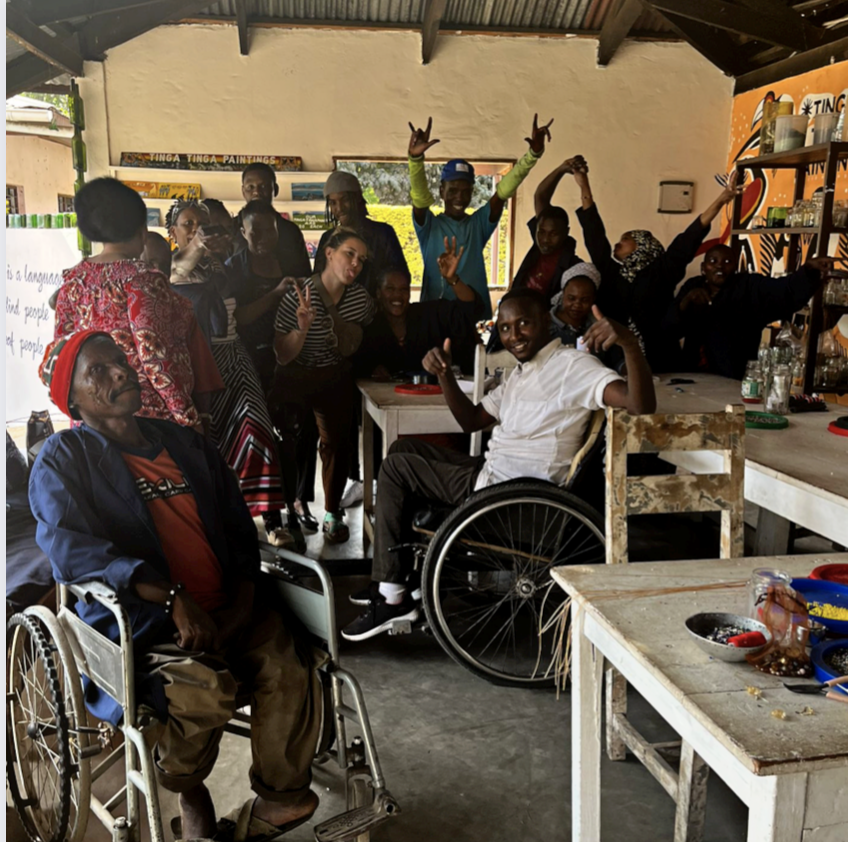
I am personally very grateful and had such a great time but it was even more internally filling to see the smile on Lacey’s face never disappear from arrival to departure. 10/10 day.
Zaviar Moore, Southern University Baseball
Day Five- Rest Day
Written by: Megan Oyster Montefusco & Suzanne Potts
Lacey, Chris, and I got to visit a girl named Upende’s boma and meet her family. They were so welcoming and had music playing and everything set up for us as we arrived. They even offered to slaughter a goat for us as a way to show their appreciation…! We politely said nooo thank you. They also offered us Fantas (tea) so we drank those as we sat in their “family room.” It was amazing hearing about their family and their traditions. Upende’s dad shared with us that Upende is the one in their family who does all of their interior design! She loves textiles and fabrics. Their boma was beautiful and you could tell Upende was proud as she gave us a tour around their farm.
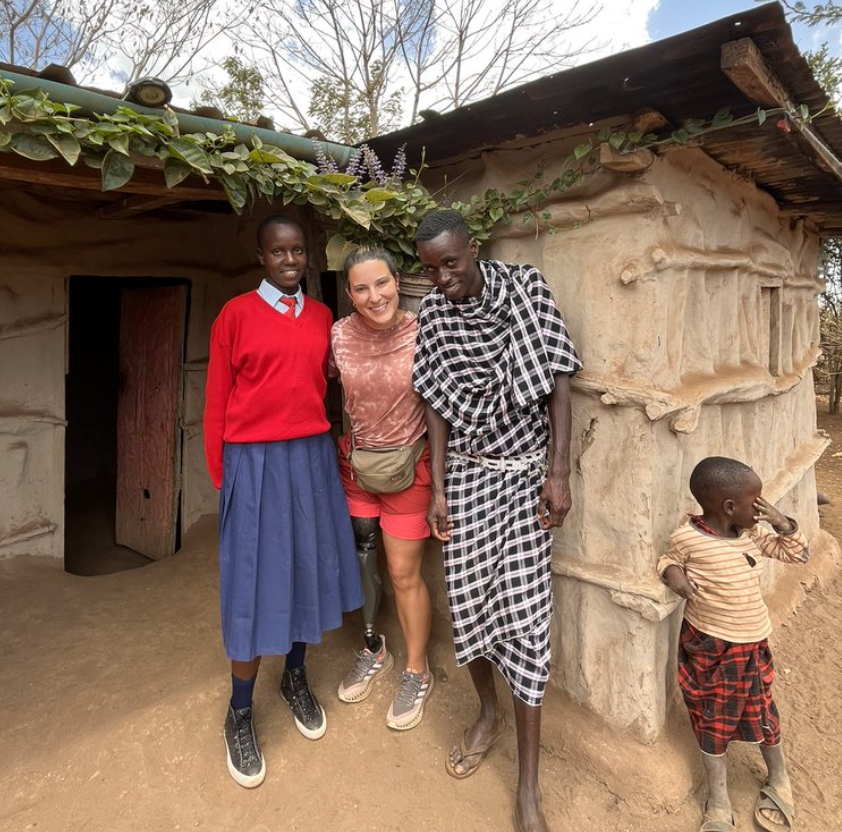
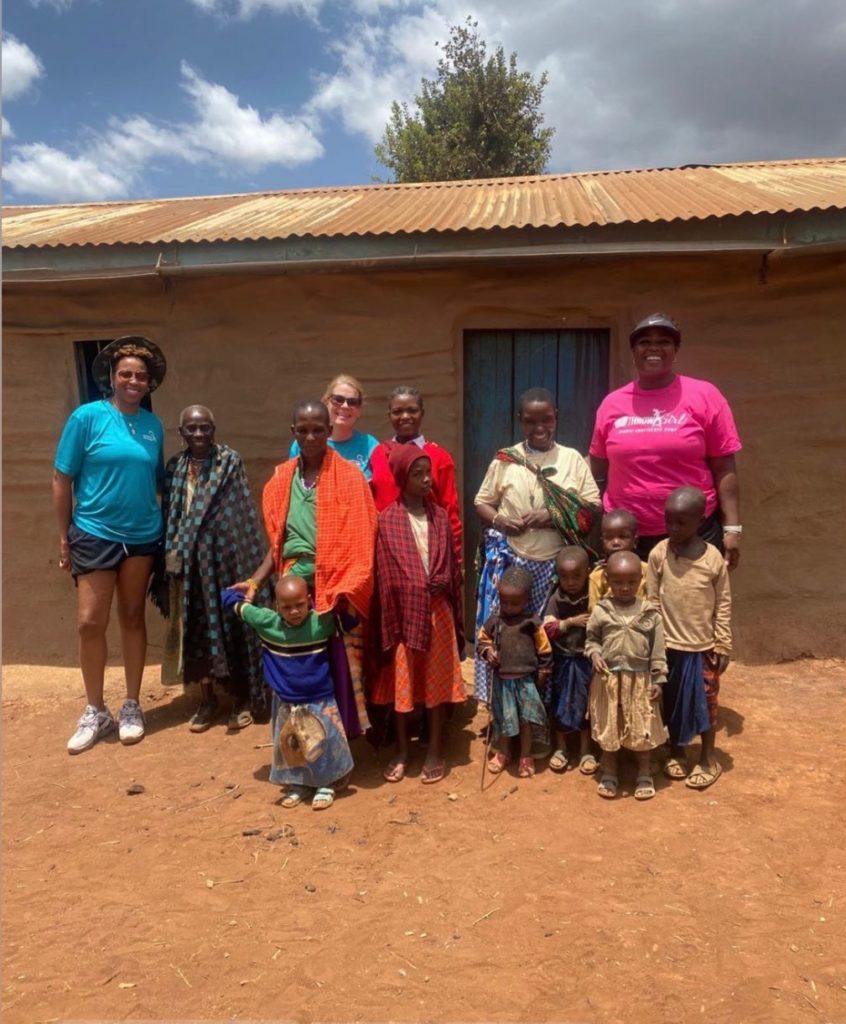
Suzanne, Michelle, and Chasity all visited Ndajiri’s home, where her mother, aunts, little brother, younger cousins, and sweet grandmother (Gogo) sat and answered questions with Ndajiri translating for us. We brought sodas and candies as gifts as well and enjoyed seeing their homes, their animals, family structure, and more. We shared photos from Ndajiri’s 2020 visit to Washington, DC with her family, videos of snow (!), and her grandmother prayed over our trip. We finished our boma visit with a tour of her grandmother’s boma and family photos with the whole group.
Day Six
Written by: Megan Oyster Montefusco & Suzanne Potts
We visited a local primary school and were greeted by hundreds of little kids! We were given a short tour and stopped by a few classrooms. The classes all sang for us! It was so cute. The kids were singing so loud and proud and dancing all at the same time. It was the perfect start to the day. After our tour, I got to coach soccer to a big group of kids. None of them spoke English but we made it work! We had a bunch of lines going and we had the kids doing different types of passes and volleys. There were no cones, only a few balls, tons of kids, and even more little kids watching. It was chaos but tons of fun. I was tossing the ball to my line of kids and if they got it back to my hands I said “very nice”. A group of little kids was watching close by and they kept repeating “VERY NICE” every time I said it.
We returned to Orkeeswa school following our primary school visit. The students had a celebration ready for us outside where we ate lunch all week. They gave us a traditional Masai Shuka or a dress that looks like a robe. Upende gave me mine and we both had tears in our eyes. We got to say our thank you’s to the students for our time at Orkeeswa. I was able to give away one of my Orlando Pride jerseys to a girl who came out to play soccer with me every day. I gave it to her to recognize her leadership in soccer at Orkeeswa school. She was one of the best players at Orkeeswa and on top of that always went out of her way to help others and show them how to do things. It was tough to pick out someone to give my jersey to, but this little girl had an unmatched passion for soccer.
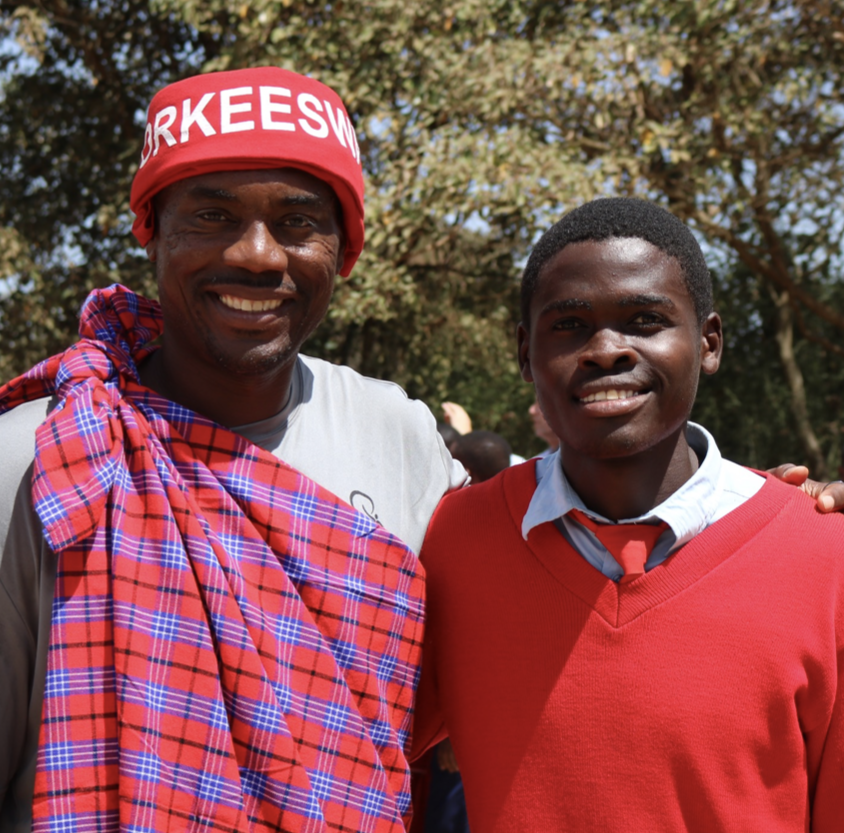
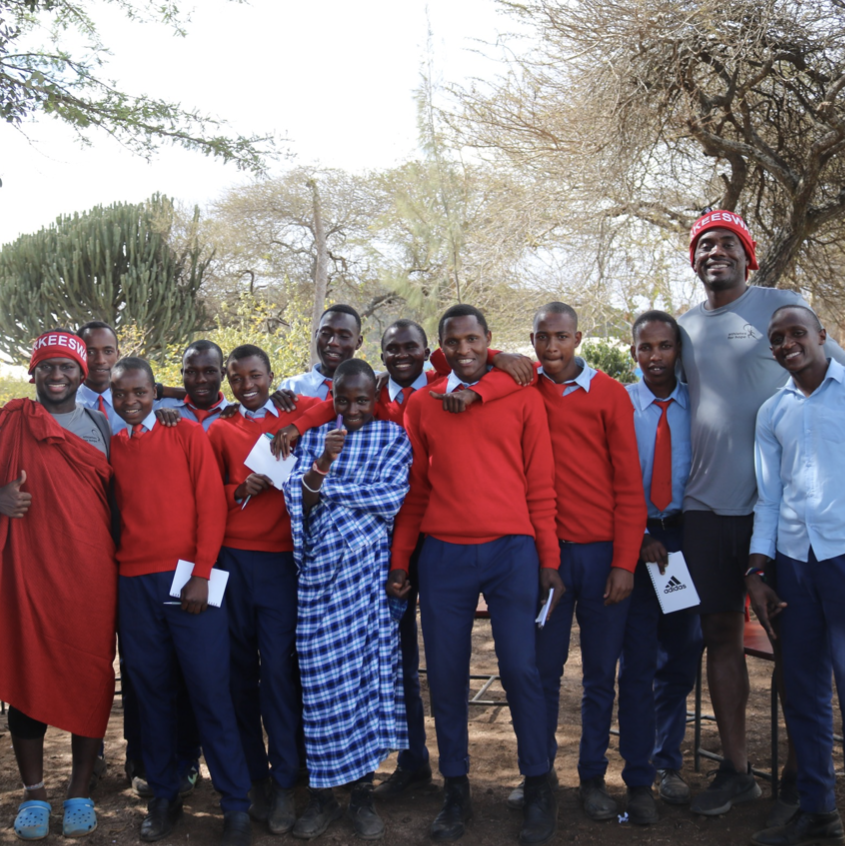
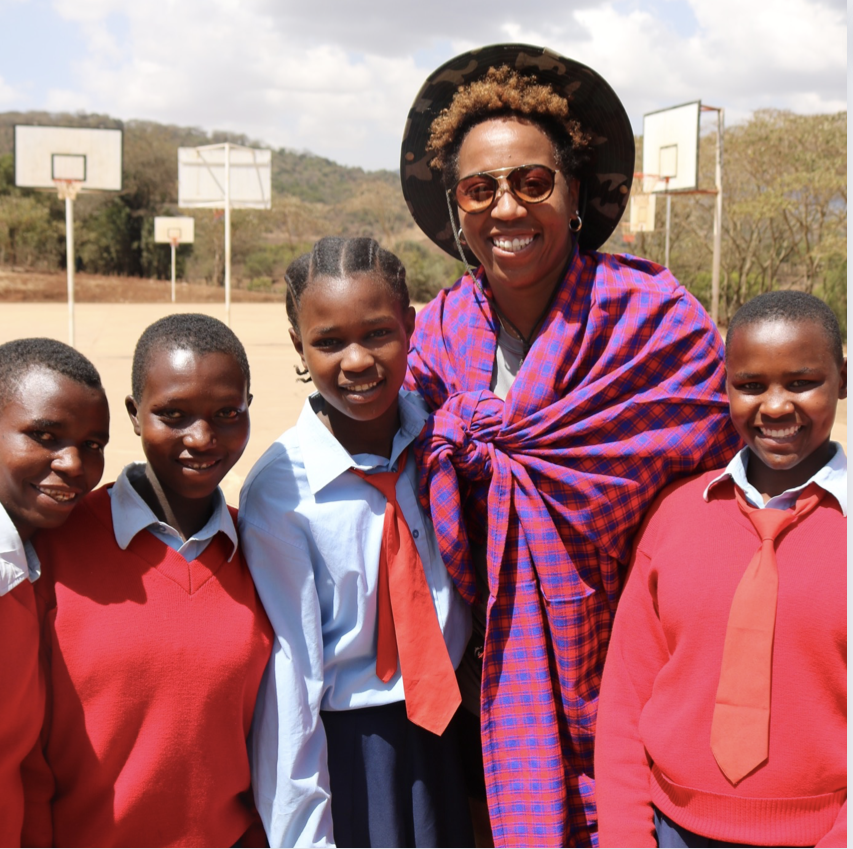
We also had our last life skills session. Michelle and I worked together most of the week with the same group of girls. We were only supposed to be able to cover 4/6 of the C.H.A.M.P.S words but when we told the girls that they demanded that we shared info about the other two words. They stayed curious and passionate to learn the whole time we worked with them. It was inspiring and awesome to see how engaged they were with us. It was a really hard goodbye to our group of girls. We took tons of pictures/selfies and took down each other’s names in hopes to stay pen pals.
It was an incredible experience to bring our AFH Fit C.H.A.M.P.S and Whole Being Athlete HEARTS curriculum to Tanzania, to learn about their culture, to share the many gifts of sports, and to have a wonderful time getting to know the students and staff at Orkeeswa!
Oh What A Night! AFH Celebrates 13 Years with Gala
On November 9, 2019, Athletes for Hope brought together more than 300 of its supporters in honor of our 13th anniversary in Bender Arena at American University in Washington, D.C. The evening featured a cocktail hour filled with various sports games, a photo booth, and even two body contortionists.
During the program portion of the evening, AFH CEO Ivan Blumberg reflected on 13 years of AFH programs and the positive impact they have continued to generate in communities across the U.S. and beyond. Following Ivan, we awarded our first ever Athlete of the Year award to Megan Oyster, and honored Stephen Whisnant and Emma and Derrick Dockery. The latter part of the evening featured an exciting silent and live auction that provided once in a lifetime opportunities such as attending the Star Wars 9 premiere, VIP Indy 500 experience, and attending the 2020 US Open.
The evening was a tremendous success for Athletes for Hope, and we look forward to hosting this event on an annual basis in the years to come!
Athletes for Hope Impact: 2015
As Athletes for Hope concludes its 9th year of existence, we are humbled by the many amazing people and organizations who have joined us in our journey. AFH has now grown from its original 12 Founding Athletes to a powerful network of over 2,000 athletes from across 20 different sports.
This year AFH facilitated 31 Causeway workshops, which was more than any other year on record. We conducted our workshops for more than 600 professional, Olympic, and college athletes such as the Washington Wizards (NBA), the Washington Mystics (WNBA), the U.S. Olympic Synchronized Swimming Team, the U.S. Men’s National Soccer Team, and many others.
In 2015, AFH expanded many of its programs and deepened our footprint. Here are a few notable examples:
- AFH facilitated Causeway workshops for 20 varsity sports teams from the University of Virginia, Louisiana State University, Tulane University, and Southern University.
- AFH partnered with pro basketball player Awvee Storey and KIPP Schools to create Power Up with the Pros DC (#PowerUpDC), an after school physical fitness initiative featuring monthly visits from Washington D.C-area professional athletes.
- AFH member athletes led 70 Let’s Move! Active Schools visits focused upon improving physical fitness in 42 different communities throughout the U.S.
AFH member athletes broadened their impact on the global stage as they became advocates for impactful Gates-grantee organizations such as 1,000 Days, Nothing But Nets, Every Mother Counts, and the Universal Access Project.
Contributions from our partners such as Nike, the Gates Foundation, the Irene W. and C.B. Pennington Foundation have enabled us to change the lives of tens of thousands of people across many charities and causes. We owe much of 2015’s success to our passionate and dedicated group of supporters, so thank you for everything that you do!
Please consider making a donation to Athletes for Hope this holiday here every dollar counts.
Happy Holidays,
Ivan Blumberg
CEO, Athletes for Hope



